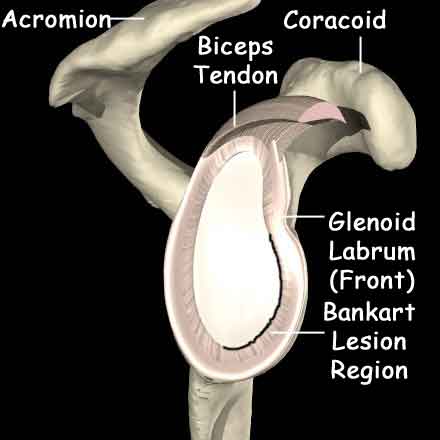SLAP lesion
(Superior Labral Anterior Posterior) Lesion
This is a condition of the shoulder which usually affects younger people. It is most commonly caused by a fall on the arm although may be seen in people who do a lot of throwing. The glenoid has a rim of tissue (the labrum) around its edge. At the top of this rim (12 o’clock) the biceps tendon also attaches. It is possible to pull the labrum and the tendon off the bone in this region from the 11 – 1 o’clock positions.
What are the signs and symptoms?
Usually people complain of pain or a feeling of instability in the shoulder. It is made worse when they put the arm into the “cocked position” ready to throw. Some may complain of pain in the shoulder on lifting heavy objects. A clicking sound may also be heard when trying to throw.
How is the diagnosis made?
The doctor will listen to the description of events and examine the shoulder. X-Rays will also be taken to determine whether there is a piece of bone involved. An MRI scan may also be required, as the lesion itself will not show up on an X-Ray.
If there is any doubt about the diagnosis an arthroscopy of the shoulder will be done.
What is the initial treatment?
There is no acute treatment for this condition as often the individual is not aware of a particular time or event precipitating it. RICE is the standard treatment to reduce inflammation and swelling in the shoulder. There is no physiotherapy modality which will treat the lesion itself but it may be beneficial in strengthening and balancing the muscles of the shoulder.
If initial treatment doesn’t work, what’s next?
If symptoms persist arthroscopy will be required to repair the lesion. If possible the torn tissue is reattached to the bone using small stitches and “suture achors”. If this is not possible the tissue will be removed reducing the symptoms.
SLAP Lesion Repair
